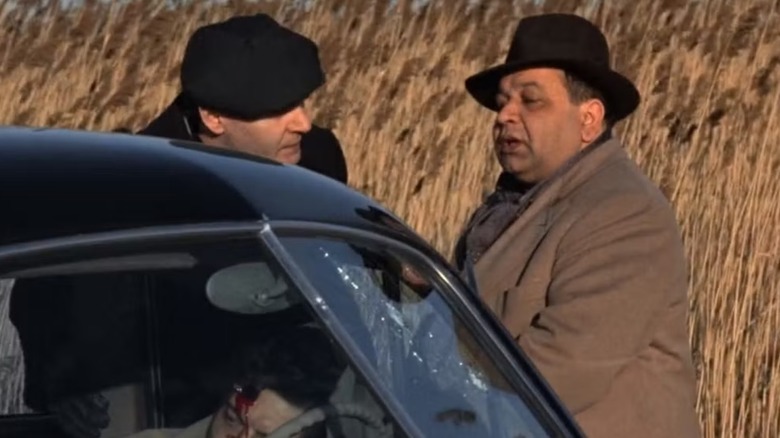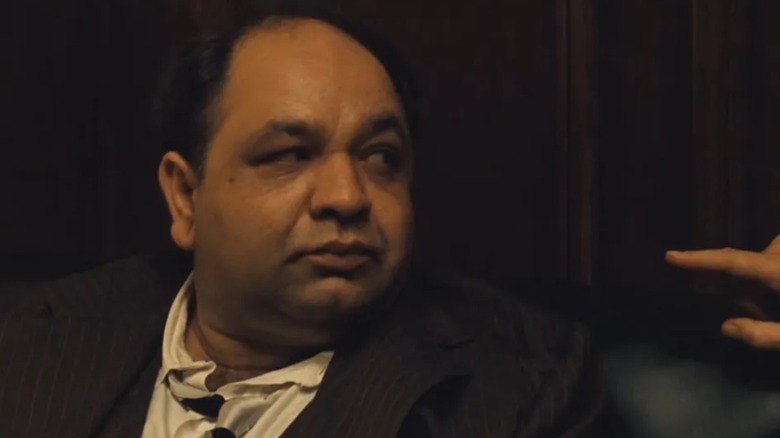
Everything in Francis Ford Coppola's "The Godfather" is perfect, even when it isn't. In a script that often reads like poetry, it's well documented that some of the most beloved moments in one of the greatest crime movies ever made were simply happy accidents. James Caan's Sonny tossing money to photographers for a broken camera was a snapshot of spontaneity, and even Don Corleone's opening conversation was made all the more unsettling thanks to Marlon Brando bringing a stray cat to the scene and creating
one of the most memorable character introductions in cinema history.
Among the essential improvisations that make "The Godfather" a masterpiece is the darkly humorous and incredibly heartless death of a traitor -- and the retrieval of a pastry that would be recited for decades. In the tense and tightly orchestrated assassination of Pauli Gatto (John Martino), a respected capo and dedicated member of the Corleone family, Peter Clemenza (Richard Castellano) hops out of his car on a country road to relieve himself and returns to Gatto with a hole in his head, with the shooter Rocco Lampone (Tom Rosqui) waiting for his next orders. It's here that Castellano adds some flavor to his line of "leave the gun" by adding "take the cannoli" as a wonderfully bleak ending. The line became as infamous as "I'm going to make him an offer he can't refuse" and "Look how they massacred my boy." The fascinating history behind it, however, is its surprising origin and the fallout from it, which led to issues in "The Godfather Part II."
Read more: The 10 Best Movies Of All Time, According To IMDb
Who Came Up With The Line 'Leave The Gun, Take The Cannoli?'

According to The Hollywood Reporter, the story goes that Castellano added the extra detail about the cannoli after words of advice from his on-screen (and real-life) wife, Ardell Sheridan, reminding him to pick some up on the way home. As a result, the man who so brilliantly brought Clemenza to life expanded on what was simply "leave the gun," which made it into the final version of the film. With a moment as incredible as that, it's understandable why Coppola kept it in the edit, making room for what would become a line that would reappear in popular culture time and again for years afterward. What's bittersweet about such a monumental moment, however, is that it would affect Castellano's future within Coppola's trilogy.
Initially, Castellano was set to return in "The Godfather Part II" before the actor made some pretty outlandish demands. One rumored requirement was that Sheridan write all of his dialogue in the film, which, understandably, wouldn't have gone over well. As a result, Clemenza was killed off-screen between the first two films and only mentioned in passing in "The Godfather Part II." Even so, that didn't stop his legacy, which was bound to six words and served as an excellent insight into the world Coppola helped create.
Why Does 'Leave The Gun, Take The Cannoli' Remain So Iconic?
Just like many quotes woven into the tangled story of Michael Corleone's rise to power, "Leave the gun, take the cannoli" has stood the test of time because of its effortless way of blending the everyday world with the brutal and unforgiving one to which the Corleone family belongs. Flowing like a perfect one-two punch and all in the same breath, Clemenza's request is surprisingly nonchalant about eliminating a rat and making sure he gets his wife's cannoli order home on time. It's another excellent example of making these characters, who live in a world we'll never enter, more relatable (and setting the standard for other gangster stories to follow).
This, along with numerous other elements embedded in Coppola's crime saga, helped establish a standard that all other equally favored gangster sagas sought to replicate (and even come close to). Clemenza's love of food and cooking is no different from the precise garlic-slicing made by Paulie Cicero (Paul Sorvino) in "Goodfellas," or "The Sopranos" constant inhalation of gabagool that reached memeified status. No matter what, though, this blending of food and fatalities in a criminal underworld we're still obsessed with all follow a trail of cannoli crumbs back to Clemenza, his disregard for human life, and his high prioritization of pastry.
If you're looking for the easiest way to keep up with all the major movie and TV news, why not sign up to our free newsletter?
Read the original article on SlashFilm.












